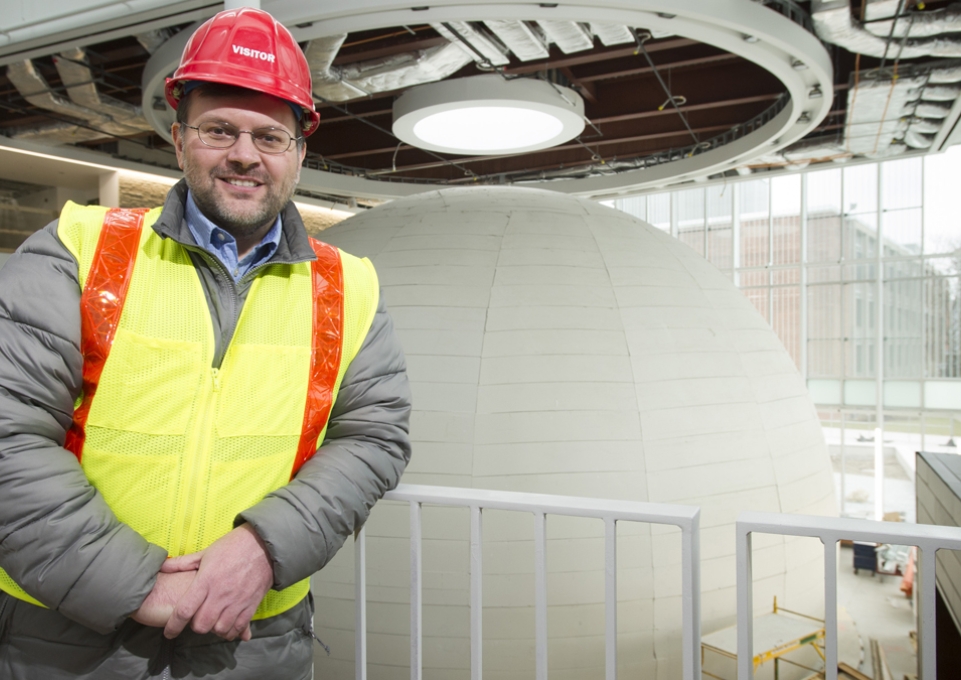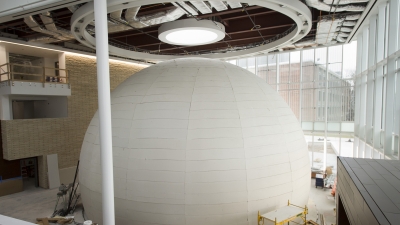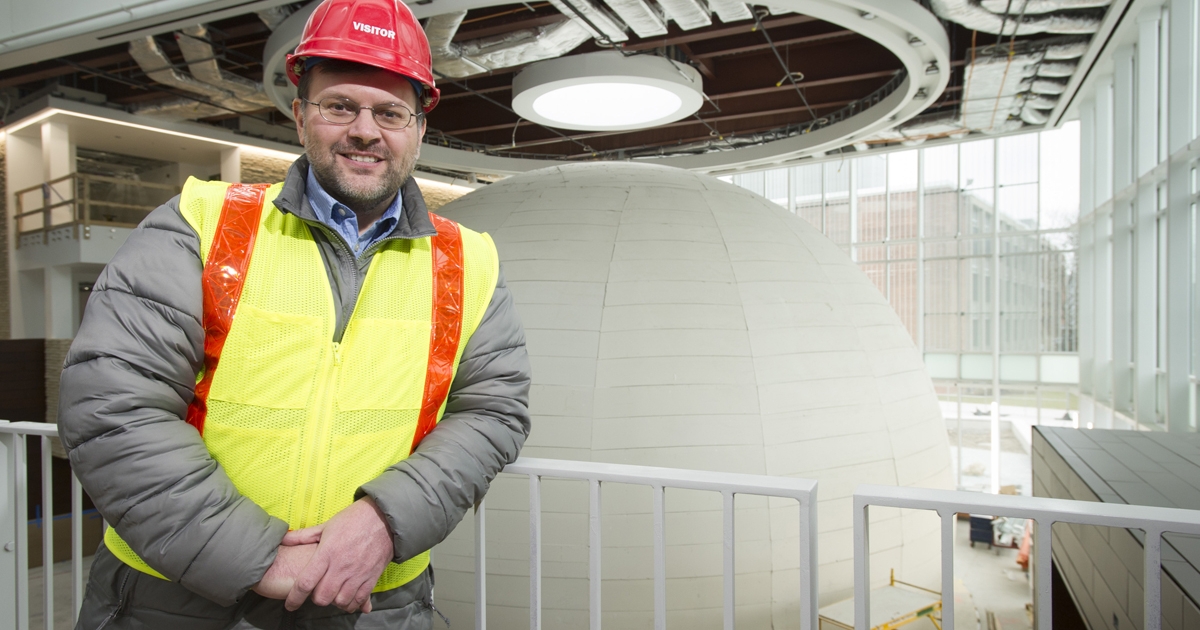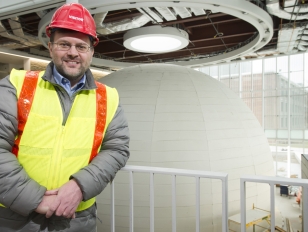
When the Mars 2020 rover is officially named on February 18, Buffalo State College’s Kevin Williams will have played a role in choosing its moniker.
Williams, director of Buffalo State’s Whitworth Ferguson Planetarium and associate professor of earth sciences and science education, was one of many judges of the nationwide contest to name the rover. For Williams, serving as a judge was a great way to see how the process worked.
“I wanted to understand better how it’s done,” Williams said. “I had known that they run these competitions in the past, but you don’t really hear much about the details of the process. By being a part of it, I could see how it all worked.”
The naming contest is part of a Space Act Agreement in educational and public outreach efforts between the National Aeronautics and Space Administration (NASA); Battelle, a private technology company headquartered in Columbus, Ohio; and Future Engineers LLC, an online education program based in Burbank, California.
The contest was open to K–12 students across the country. Some submitted names as groups or classes of students, some as individuals. Each included a rationale for why their name should be selected for the rover. In total, more than 28,000 essays were submitted for the contest, which began in August 2019.
The contestants were reduced to 155 semifinalists, representing every state and grade level across the United States, by a panel of 4,700 judges. Through each round of voting, the number of contenders was narrowed, ultimately reaching the nine names currently under consideration.
Williams was also interested in seeing some of the suggestions that were not chosen. For his part, he received 60 names. “There were some really creative names that students came up with,” Williams said.
Most would agree, the nine finalists are all names fitting for a mission to Mars: Endurance, Tenacity, Promise, Perseverance, Vision, Clarity, Ingenuity, Fortitude, and Courage.
“From my perspective, it’s a great way to get a lot of students and teachers excited about the upcoming rover because they’re actively taking part in it,” Williams said, referring to the contest.
The newly named rover is scheduled to launch on July 17, 2020, and is destined to land in Mars’s Jezero Crater on February 18, 2021.
The rover, which is a “robotic scientist” weighing more than 2,300 pounds, will carry out a variety of tasks when it reaches Mars. Because of advances in technology, this rover will be able to do things previous rovers were unable to do, Williams said, including “going to a location that we haven’t been before.”
One of the many scientific instruments this rover will be equipped with is a ground-penetrating radar, Williams said, which can be used to look at the geology below the planet’s surface.
“One use of GPR is to look for ground ice,” he said, adding that he’s done similar work in the Arctic. “In some cases, it’s like blocks of ice not too far below the surface. With Mars, that’s important, because ice will be an important resource for future human exploration. You need water.”
The new rover will also be able to pick up samples from Mars and analyze them, Williams said.
Overall, he said, the naming contest and naming the rover itself make it an easier topic for discussion.
“It makes it more approachable for people to talk about the rover.”
About the Whitworth Ferguson Planetarium Buffalo State’s Whitworth Ferguson Planetarium, a 43-foot spherical facility (pictured under construction), is the main focal point of Phase 4 of the Science and Mathematics Complex construction project—a $23 million final addition that will connect the complex’s main entrance and lobby to the three-story atrium. This is the final phase in the renovation and expansion of the Buffalo State Science Building that began with the demolition of the vacant south wing in June 2018.
Buffalo State’s Whitworth Ferguson Planetarium, a 43-foot spherical facility (pictured under construction), is the main focal point of Phase 4 of the Science and Mathematics Complex construction project—a $23 million final addition that will connect the complex’s main entrance and lobby to the three-story atrium. This is the final phase in the renovation and expansion of the Buffalo State Science Building that began with the demolition of the vacant south wing in June 2018.
The planetarium will offer visitors a chance to explore the night sky from the vantage point of Earth, as well as virtually travel to other planets and galaxies through a state-of-the-art digital projection system. The projector can accommodate numerous fields of study, such as projecting a model of the human body for analysis by a biology class. The planetarium will also be capable of streaming live feeds from NASA.
The complex lobby will also feature a café and seating area. Phase 4 also adds large lecture halls, classrooms, a greenhouse, graduate student space, faculty offices, and research labs for biology, chemistry, and earth sciences. The project is slated for completion in fall 2020.
Photos by Bruce Fox, campus photographer.



